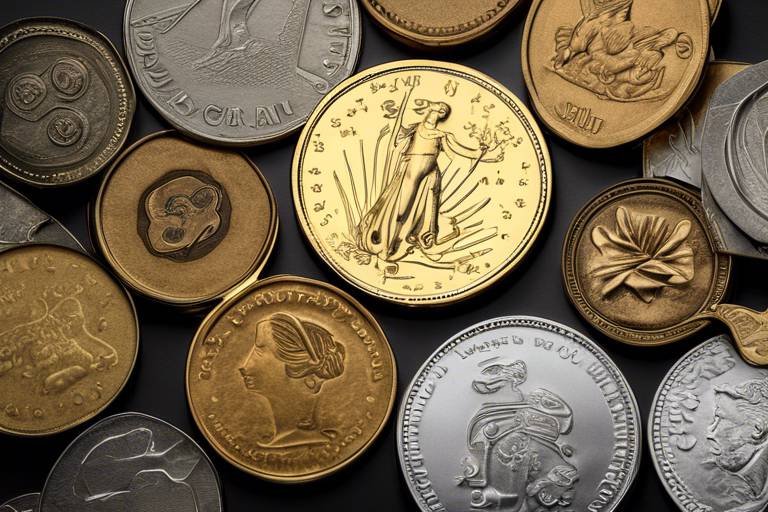How to Use Wallets for Storing Multiple Cryptocurrencies
In today's digital age, cryptocurrencies have become a significant part of our financial landscape. With the rise of various digital assets, the importance of securely storing them has never been more crucial. Imagine your cryptocurrencies as valuable treasures; just like you wouldn’t leave your gold coins lying around carelessly, you need to store your digital currencies in a safe place. This is where cryptocurrency wallets come into play. They act as your personal vaults, providing a secure environment for your digital assets while allowing you to manage multiple cryptocurrencies efficiently.
But how do you choose the right wallet? With so many options available, it can feel overwhelming. The key is to understand the different types of wallets and their unique features. Some wallets are designed for maximum security, while others prioritize convenience. It’s essential to identify your needs and preferences before making a decision. For instance, if you're a frequent trader, you might prefer a software wallet for its accessibility. On the other hand, if you’re looking to hold your assets long-term, a hardware wallet could be your best bet.
As we dive deeper into this article, we will explore the various types of wallets available, their benefits, and best practices for managing your cryptocurrencies. Whether you're a seasoned investor or just starting your crypto journey, understanding how to use wallets effectively will empower you to take control of your digital assets. Let's get started!
At its core, a cryptocurrency wallet is a digital tool that allows you to store, send, and receive cryptocurrencies. Think of it as a bank account specifically designed for digital currencies. However, unlike traditional banks, cryptocurrency wallets don’t store your funds in the same way. Instead, they store your private and public keys, which are essential for conducting transactions on the blockchain. The public key is like your bank account number, while the private key is akin to your PIN – keep it safe and never share it with anyone!
Wallets come in various forms, each serving different purposes and offering unique functionalities. Some wallets are designed for easy access and quick transactions, while others focus on security and long-term storage. Understanding these differences is crucial for making an informed decision about how to store your cryptocurrencies safely.
When it comes to cryptocurrency wallets, there are four primary types: hardware wallets, software wallets, paper wallets, and mobile wallets. Each type has its own set of features, advantages, and disadvantages. Let's break them down.
Hardware wallets are physical devices that store your cryptocurrencies offline, making them one of the most secure options available. They are designed to protect your private keys from online threats and hacks, which is crucial in today’s digital landscape where cyberattacks are rampant. Using a hardware wallet is like locking your valuables in a safe – they are much less susceptible to theft when kept offline.
Some of the most widely used hardware wallets include:
- Ledger: Known for its robust security features and user-friendly interface.
- Trezor: Offers a simple setup process and supports a wide range of cryptocurrencies.
Setting up a hardware wallet is relatively straightforward. Here’s a quick guide:
- Purchase a reputable hardware wallet from an official source.
- Follow the manufacturer’s instructions for initial configuration.
- Connect the wallet to your computer and install the necessary software.
- Transfer your cryptocurrencies securely to the hardware wallet.
Software wallets, on the other hand, are applications that you can download on your computer or smartphone. They offer a convenient way to manage multiple cryptocurrencies, allowing you to access your funds quickly. However, they come with trade-offs in terms of security. Using a software wallet is like keeping your cash in your pocket – it’s easily accessible, but also more vulnerable to theft.
Choosing the best wallet for your needs depends on several factors, including how often you trade, your security preferences, and your level of technical expertise. Consider the following criteria:
- Usage: Are you a frequent trader or a long-term holder?
- Security: How much risk are you willing to take?
- Technical Skills: Are you comfortable with technology, or do you prefer something simple?
Security should always be a top priority when using cryptocurrency wallets. Here are some essential measures to consider:
- Two-Factor Authentication: Always enable 2FA to add an extra layer of security.
- Backup Strategies: Regularly back up your wallet to prevent loss of access.
- Private Key Safety: Keep your private keys in a secure location and never share them.
Managing multiple cryptocurrencies can be a daunting task, especially if you have assets spread across different wallets. Here are some effective strategies:
- Use a wallet that supports multiple cryptocurrencies to simplify management.
- Keep a detailed record of your assets, including their values and transaction history.
- Regularly review your portfolio to make informed decisions about buying, selling, or holding.
Q: What is the safest type of cryptocurrency wallet?
A: Hardware wallets are generally considered the safest option for long-term storage.
Q: Can I use multiple wallets for different cryptocurrencies?
A: Yes, using multiple wallets can help you manage different assets more effectively.
Q: How do I recover my wallet if I lose my private keys?
A: If you have a backup of your wallet, you can restore access; otherwise, you may lose your funds.
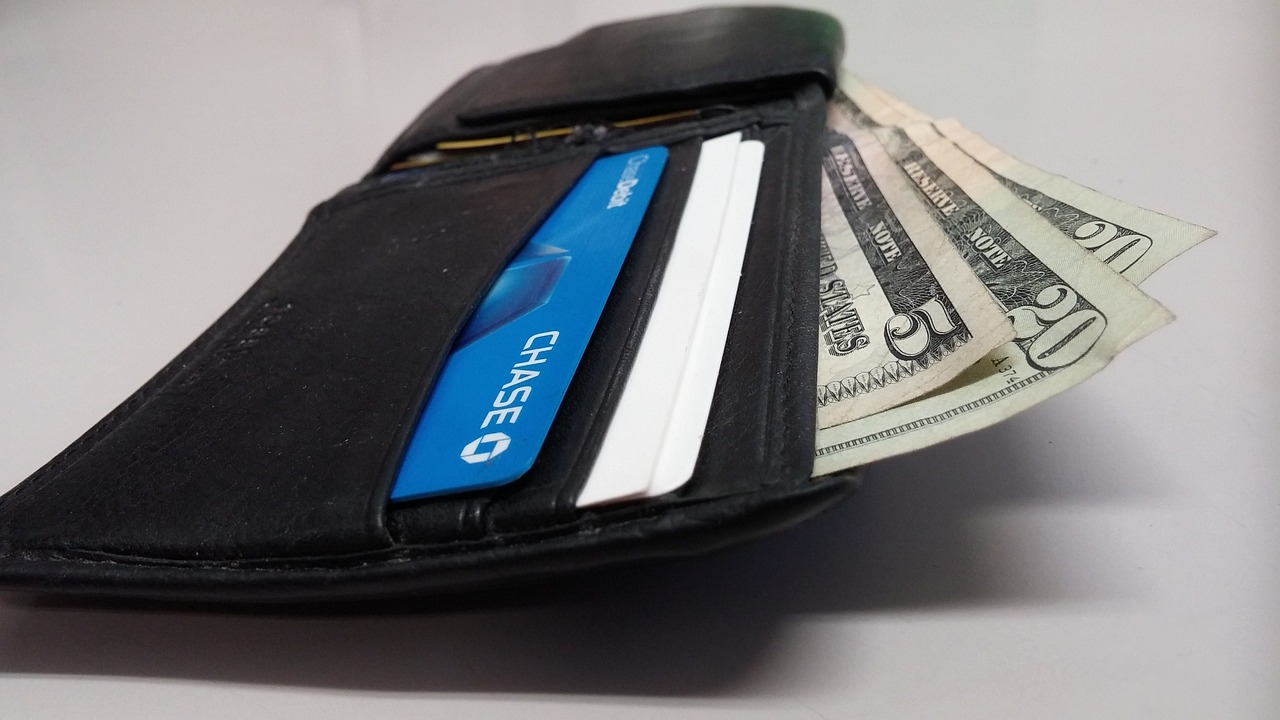
Understanding Cryptocurrency Wallets
When you dive into the world of cryptocurrencies, you quickly realize that having a reliable method to store your digital assets is crucial. Cryptocurrency wallets serve as your personal vaults, allowing you to manage, store, and transact your digital currencies securely. But what exactly is a cryptocurrency wallet? Well, think of it as a digital interface that interacts with blockchain networks to facilitate transactions. Just like a traditional wallet holds your cash and cards, a cryptocurrency wallet holds your digital coins and tokens.
At its core, a cryptocurrency wallet does not actually store the coins themselves. Instead, it stores the private keys and public keys that are essential for accessing your cryptocurrencies on the blockchain. The public key is akin to your bank account number—it's safe to share with others for receiving funds. On the other hand, your private key is like your ATM PIN; it must be kept secret and secure, as it grants access to your funds. Losing your private key means losing access to your cryptocurrencies forever, which is why understanding how these wallets function is paramount.
There are two main types of wallets: hot wallets and cold wallets. Hot wallets are connected to the internet, making them more convenient for frequent transactions but also more vulnerable to hacks. Cold wallets, such as hardware wallets, are offline and offer enhanced security, making them ideal for long-term storage. Each type has its own set of advantages and disadvantages, which we’ll explore in detail later. However, regardless of the wallet type you choose, the essential purpose remains the same: to provide a secure way to manage your digital assets.
In the ever-evolving landscape of cryptocurrencies, understanding wallets also means being aware of the various features they offer. For instance, some wallets allow you to manage multiple cryptocurrencies in one place, while others focus on a single currency. Additionally, many wallets provide features such as transaction history, address book, and even exchange capabilities within the app. This functionality can significantly enhance your ability to track and manage your investments effectively.
Ultimately, the right wallet for you will depend on your personal needs and how you plan to use your cryptocurrencies. Whether you are a casual investor or a seasoned trader, knowing how wallets work is the first step in your cryptocurrency journey. So, buckle up as we explore the different types of wallets available and help you find the perfect fit for your digital asset management!
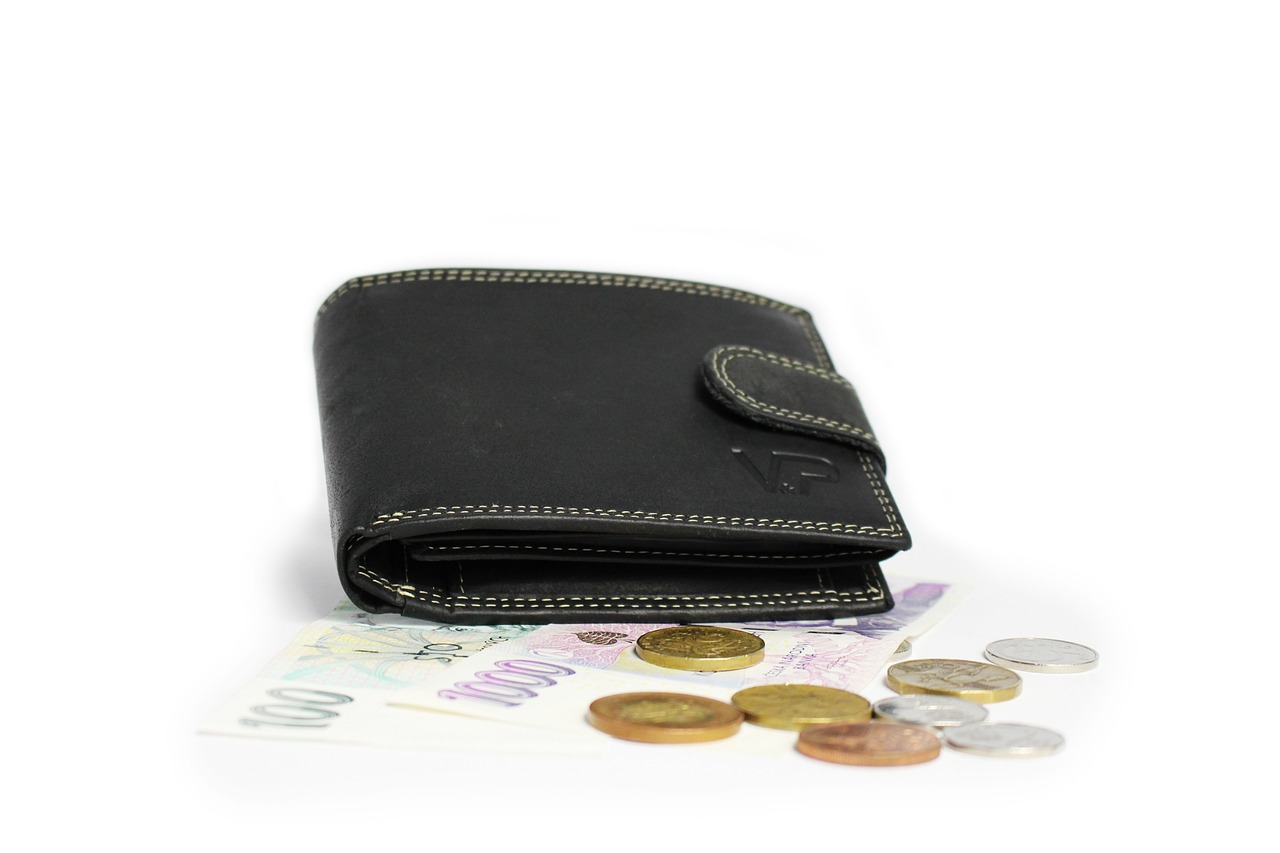
Types of Cryptocurrency Wallets
When it comes to storing your hard-earned cryptocurrencies, understanding the different types of wallets available is crucial. Each wallet type serves a unique purpose and offers distinct features that cater to various needs. Whether you're a casual investor or a serious trader, knowing your options can help you make informed decisions. Let's dive into the main categories of cryptocurrency wallets: hardware wallets, software wallets, paper wallets, and mobile wallets, each offering a unique blend of security, accessibility, and convenience.
First up, we have hardware wallets. These are physical devices that store your cryptocurrencies offline, providing an extra layer of security against online threats. Think of hardware wallets as a safe deposit box for your digital assets. They are less susceptible to hacking because they are not connected to the internet. However, they can be a bit more complex to set up and use, which might not appeal to everyone.
Next, we have software wallets. These are applications or programs that you can install on your computer or smartphone. They offer a more user-friendly experience, making it easy to send and receive cryptocurrencies. However, they come with a trade-off: being online means they are more vulnerable to hacks. Software wallets can be further categorized into desktop wallets, mobile wallets, and web wallets, each with its own pros and cons. For example, mobile wallets offer convenience for transactions on the go, while desktop wallets may provide more robust security features.
Then there are paper wallets. These are physical pieces of paper that contain your public and private keys. Although they might seem old-fashioned, they can be a great way to securely store your cryptocurrencies offline. Just like a treasure map, as long as you keep it safe, your assets are secure. However, the downside is that if you lose the paper or it gets damaged, you could lose access to your funds forever.
Lastly, we have mobile wallets. These are specifically designed for use on smartphones, making them incredibly convenient for everyday transactions. Mobile wallets can be either custodial or non-custodial. In custodial wallets, a third party manages your funds, while non-custodial wallets give you full control over your private keys. This flexibility is fantastic, but it also means you need to be vigilant about security practices.
To help you visualize the differences, here's a quick comparison table:
| Wallet Type | Security Level | Ease of Use | Best For |
|---|---|---|---|
| Hardware Wallet | High | Moderate | Long-term storage |
| Software Wallet | Moderate | High | Active trading |
| Paper Wallet | High | Low | Cold storage |
| Mobile Wallet | Moderate | Very High | Daily transactions |
In conclusion, choosing the right type of cryptocurrency wallet depends on your individual needs and how you plan to use your digital assets. Whether you prioritize security, convenience, or ease of use, there's a wallet out there that fits your needs perfectly. Remember, your choice of wallet can significantly impact your overall cryptocurrency experience, so take the time to explore your options!
Q: What is a cryptocurrency wallet?
A: A cryptocurrency wallet is a digital tool that allows you to store, send, and receive cryptocurrencies. It can be in various forms, including hardware, software, paper, or mobile wallets.
Q: Are hardware wallets worth the investment?
A: Yes, hardware wallets provide a high level of security for your cryptocurrencies, making them a worthwhile investment for those who hold significant amounts of digital assets.
Q: Can I use multiple wallet types simultaneously?
A: Absolutely! Many users choose to use a combination of wallet types to balance convenience and security.

Hardware Wallets
When it comes to storing cryptocurrencies, are often hailed as the gold standard for security. Imagine a physical vault that keeps your precious assets safe from any online threats; that’s exactly what a hardware wallet does. These devices store your private keys offline, making it nearly impossible for hackers to access your funds remotely. They function like a USB stick, allowing you to connect to your computer only when you need to make transactions, which significantly reduces the risk of exposure to malware or phishing attacks.
One of the primary advantages of hardware wallets is their robust security features. They typically come equipped with encryption and PIN protection, ensuring that even if someone physically steals your device, they won’t be able to access your cryptocurrencies without the proper authentication. Furthermore, most hardware wallets support multiple cryptocurrencies, enabling you to manage a diverse portfolio all in one place. This versatility is especially beneficial for those who dabble in various digital assets, as it simplifies the storage process.
However, it’s essential to note that while hardware wallets are incredibly secure, they are not entirely foolproof. Users must still exercise caution, as losing the device without a proper backup can lead to irreversible loss of funds. To mitigate this risk, hardware wallets usually come with a recovery seed—a series of words that can be used to restore your wallet if it’s lost or damaged. It’s crucial to store this recovery seed in a safe location, separate from the wallet itself.
Let’s take a closer look at some of the most popular hardware wallets on the market today:
| Wallet Name | Key Features | Price Range |
|---|---|---|
| Ledger Nano S | Compact, supports over 1,500 cryptocurrencies, user-friendly interface | $59 - $79 |
| Ledger Nano X | Bluetooth connectivity, larger storage, supports over 1,800 cryptocurrencies | $149 - $199 |
| Trezor Model One | Open-source, supports many cryptocurrencies, simple design | $55 - $70 |
| Trezor Model T | Touchscreen interface, enhanced security features, supports over 1,600 cryptocurrencies | $219 - $249 |
Setting up a hardware wallet is relatively straightforward, even for those who are not tech-savvy. Most manufacturers provide detailed instructions, and the process typically involves connecting the device to your computer, initializing the wallet, and creating a strong PIN. Once set up, you can easily transfer your cryptocurrencies to the wallet by following a few simple steps. This ease of use, combined with the high level of security, makes hardware wallets an excellent choice for anyone serious about protecting their digital assets.
In conclusion, hardware wallets offer a secure and efficient way to store multiple cryptocurrencies. While they require an upfront investment, the peace of mind they provide is invaluable, especially in a world where cyber threats are becoming increasingly sophisticated. If you’re looking to safeguard your digital wealth, investing in a hardware wallet might just be the best decision you make.

Popular Hardware Wallets
When it comes to securing your cryptocurrencies, hardware wallets are often the gold standard. These physical devices store your private keys offline, making them nearly impervious to online hacks. But with so many options available, which hardware wallets should you consider? Let's dive into some of the most popular choices on the market today.
First up is the Ledger Nano S. This wallet has gained a massive following due to its affordability and robust security features. It supports a wide range of cryptocurrencies, making it a versatile choice for anyone looking to manage multiple digital assets. The Ledger Nano S uses a secure element chip to protect your private keys, ensuring that your funds remain safe even if your computer is compromised.
Another fantastic option is the Trezor Model T. This wallet is known for its user-friendly interface and touchscreen display, which makes managing your cryptocurrencies a breeze. Trezor also offers a strong focus on security, providing features like two-factor authentication and password management. The Model T supports over 1,600 cryptocurrencies, making it an excellent choice for those with diverse portfolios.
For those looking for something a bit more advanced, the Ledger Nano X might be the perfect fit. This wallet not only supports Bluetooth connectivity, allowing you to manage your assets from your mobile device, but it also boasts a larger screen and more storage capacity than its predecessor, the Nano S. The Nano X is ideal for users who want the convenience of managing their cryptocurrencies on the go without sacrificing security.
Now, you might be wondering, what sets these wallets apart? Here’s a quick comparison:
| Wallet | Security Features | Supported Cryptocurrencies | Connectivity |
|---|---|---|---|
| Ledger Nano S | Secure Element Chip | Over 1,500 | USB |
| Trezor Model T | Two-factor Authentication | Over 1,600 | USB, Touchscreen |
| Ledger Nano X | Secure Element Chip, Bluetooth | Over 1,800 | USB, Bluetooth |
In conclusion, selecting the right hardware wallet is crucial for the safety of your cryptocurrencies. Each option has its unique features and advantages, catering to different user needs. Whether you prioritize affordability, user interface, or advanced connectivity, there’s a hardware wallet out there that fits your criteria. Remember, investing in a reputable hardware wallet is like putting your money in a safe rather than leaving it out in the open; it’s a smart move for anyone serious about cryptocurrency investment.
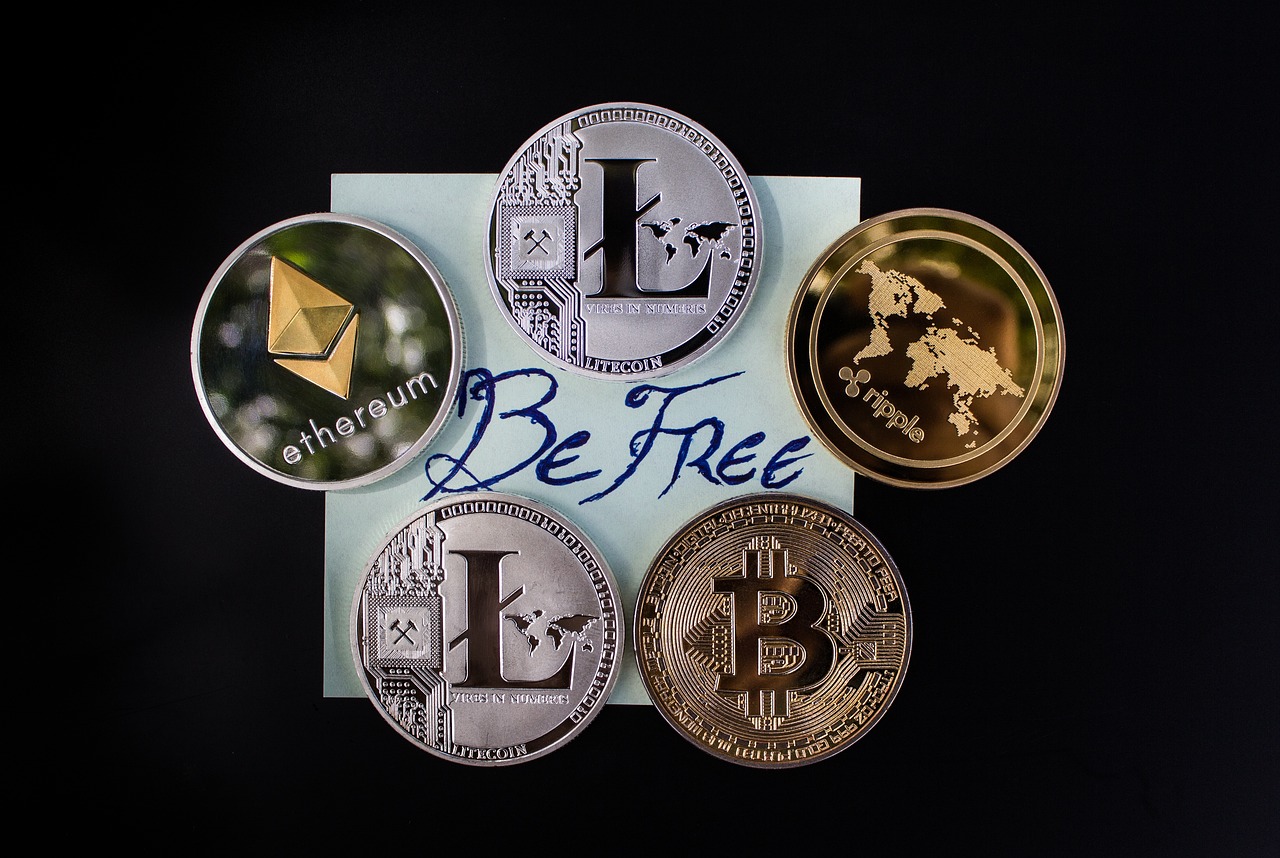
Setting Up a Hardware Wallet
Setting up a hardware wallet might seem daunting at first, but it's actually a straightforward process that can significantly enhance the security of your cryptocurrency assets. Think of it as securing your valuables in a safe rather than leaving them out in the open. The first step is to choose a reputable hardware wallet, such as Ledger or Trezor, which are well-known for their robust security features. Once you have your hardware wallet in hand, follow these simple steps to get started.
Begin by connecting your hardware wallet to your computer using the provided USB cable. Most wallets will automatically prompt you to install the necessary software, so make sure you follow the on-screen instructions carefully. This software acts as the interface through which you'll manage your cryptocurrencies. It’s essential to download this software only from the official website to avoid any potential security risks.
After installing the software, you will need to initialize your wallet. This process typically involves creating a PIN code to protect access to your wallet. Choose a PIN that is both memorable and secure—think of it as the combination to your safe. Once your PIN is set, the wallet will generate a recovery seed, usually a series of 12 to 24 words. This seed is crucial; it acts as a backup for your wallet. Write it down on paper and store it in a safe place, away from prying eyes. Never share this recovery seed with anyone, as it can be used to access your funds.
Once you’ve completed these steps, you can start transferring cryptocurrencies to your hardware wallet. Open the wallet software, select the cryptocurrency you want to receive, and follow the instructions to generate a receiving address. This address is like your bank account number—it's where others can send you funds. When making transfers, always double-check the address to ensure accuracy, as transactions on the blockchain are irreversible.
To keep your wallet secure, remember to regularly update the wallet's firmware and software. Manufacturers often release updates to patch vulnerabilities and enhance security features. Additionally, consider using a strong, unique password for the wallet software itself. This adds another layer of protection, making it harder for unauthorized users to gain access.
Finally, don’t forget to familiarize yourself with the wallet’s features. Many hardware wallets offer options for managing multiple cryptocurrencies, viewing transaction history, and even accessing decentralized applications. Understanding these features will help you make the most of your hardware wallet and keep your assets organized.
In summary, setting up a hardware wallet involves:
- Choosing a reputable hardware wallet.
- Connecting it to your computer and installing the software.
- Initializing the wallet by setting a PIN and generating a recovery seed.
- Transferring cryptocurrencies to your new wallet.
- Keeping the wallet updated and secure.
By following these steps, you can ensure that your cryptocurrencies are stored securely, providing you with peace of mind as you navigate the exciting world of digital assets.
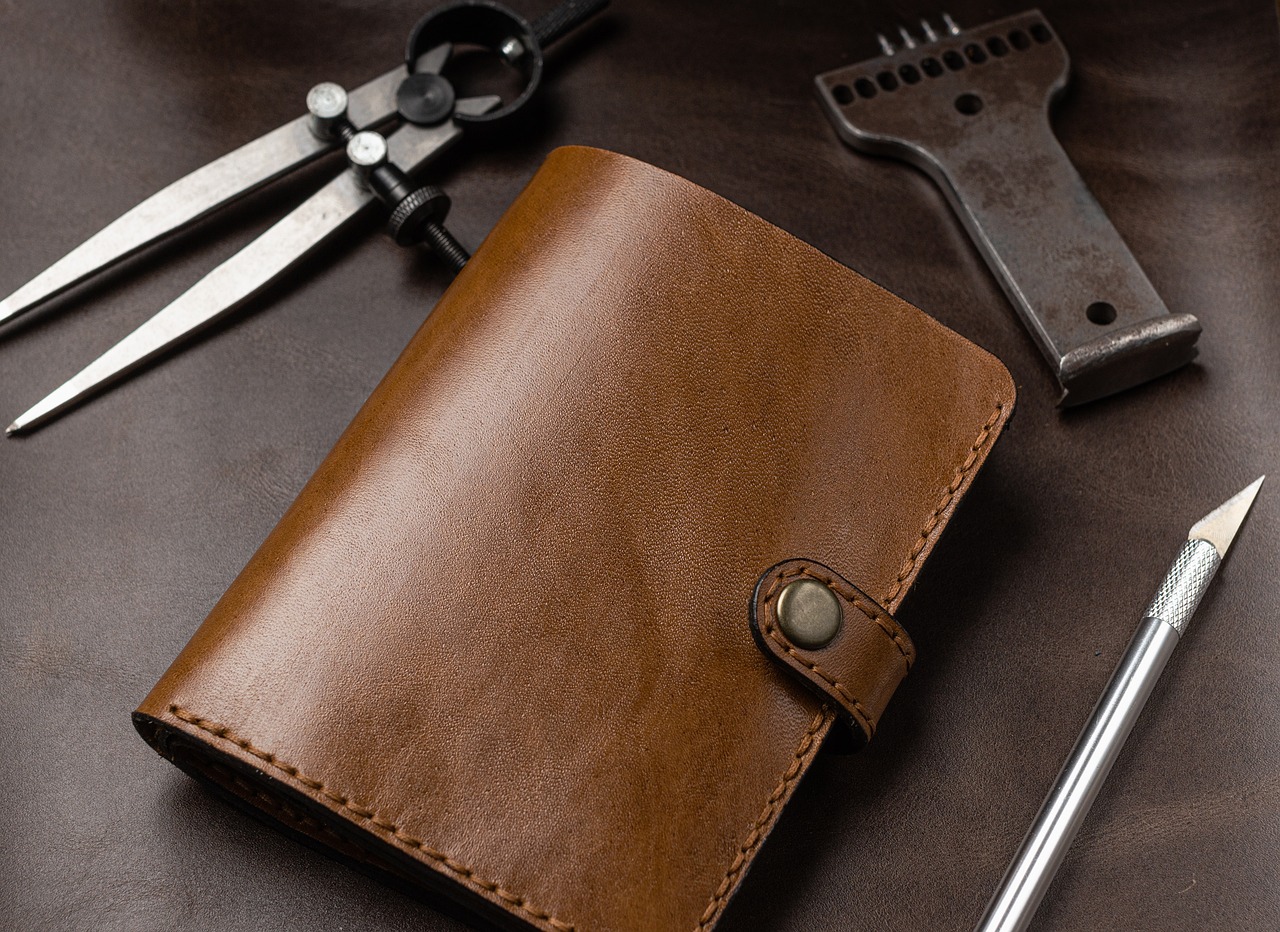
Software Wallets
When it comes to managing your cryptocurrencies, offer a blend of convenience and accessibility that many users find irresistible. These wallets are applications or software programs that you can install on your computer or mobile device, allowing you to send, receive, and store various cryptocurrencies with just a few clicks. Imagine having a digital wallet in your pocket that not only holds your cash but also gives you instant access to your entire crypto portfolio! That's the beauty of software wallets.
One of the main advantages of software wallets is their user-friendly interface. Most software wallets are designed to be intuitive, making it easy for even the most novice users to navigate their features. Whether you’re checking your balance, making transactions, or swapping between different cryptocurrencies, it often feels as simple as using your favorite social media app. However, this ease of use comes with a caveat: while software wallets are great for quick access and daily transactions, they are more vulnerable to hacks and malware compared to their hardware counterparts.
Software wallets can be categorized into two main types: desktop wallets and mobile wallets. Desktop wallets are installed directly on your computer, providing robust security as long as your device is safe from malware. On the other hand, mobile wallets are applications on your smartphone, offering the ultimate convenience for transactions on the go. However, it’s essential to note that mobile wallets can be susceptible to theft if your phone is lost or hacked.
When choosing a software wallet, consider factors such as security features, supported cryptocurrencies, and user experience. Look for wallets that offer two-factor authentication, strong encryption, and backup options to safeguard your assets. Some popular software wallets include:
| Wallet Name | Type | Key Features |
|---|---|---|
| Exodus | Desktop & Mobile | User-friendly interface, supports multiple cryptocurrencies, built-in exchange |
| Atomic Wallet | Desktop & Mobile | Decentralized, supports numerous tokens, built-in exchange |
| Coinomi | Desktop & Mobile | Multi-currency support, built-in exchange, strong privacy features |
While software wallets are perfect for everyday transactions, it’s wise to keep larger amounts of cryptocurrency in a more secure option, like a hardware wallet. Think of software wallets as your everyday wallet, where you keep just enough cash for your daily expenses, while the hardware wallet serves as your safe deposit box, where you store your wealth securely. This strategy allows you to enjoy the benefits of both worlds while minimizing your risks.
In conclusion, software wallets are a fantastic tool for anyone looking to dive into the world of cryptocurrencies. They offer flexibility and ease of use, making them suitable for both beginners and seasoned traders. Just remember to prioritize security, and you’ll be well on your way to managing your digital assets effectively!
Q1: Are software wallets safe to use?
A1: While software wallets offer convenience, they are generally less secure than hardware wallets. To enhance security, ensure you use wallets with two-factor authentication and keep your software updated.
Q2: Can I use multiple software wallets?
A2: Yes, you can use multiple software wallets to manage different cryptocurrencies or to enhance security by spreading your assets across various wallets.
Q3: What happens if I lose my software wallet?
A3: If you lose access to your software wallet, you may lose your cryptocurrencies unless you have a backup of your recovery phrase or private keys. Always keep a secure backup!

Choosing the Right Wallet for You
When it comes to managing your cryptocurrencies, the choice of wallet can feel overwhelming. With so many options available, how do you decide which one is the best fit for your needs? It’s a bit like choosing a bank for your cash; you want a place that feels secure, convenient, and trustworthy. First, consider your cryptocurrency usage. Are you a casual investor, or do you actively trade? Your usage will heavily influence the type of wallet you should choose.
Next, think about your security preferences. If you’re serious about protecting your assets from potential hacks or theft, a hardware wallet might be your best bet. On the other hand, if you prioritize convenience and access, a software wallet might suit you better. It’s essential to weigh the trade-offs between security and ease of use. For instance, while hardware wallets are incredibly secure, they can be less user-friendly than software wallets.
Another critical factor to consider is your technical expertise. If you’re tech-savvy, you might feel comfortable navigating more complex wallets with advanced features. However, if you’re new to the cryptocurrency space, a simpler, more intuitive wallet might be the way to go. Remember, the goal is to find a wallet that you can use confidently without feeling overwhelmed.
To help you make an informed decision, here’s a quick comparison of wallet types based on different criteria:
| Wallet Type | Security Level | Accessibility | User-Friendliness |
|---|---|---|---|
| Hardware Wallet | High | Low to Medium | Medium |
| Software Wallet | Medium | High | High |
| Paper Wallet | High | Very Low | Low |
| Mobile Wallet | Medium | High | High |
Ultimately, the right wallet for you will depend on your unique needs and preferences. It’s vital to take your time to research and understand the features that matter most to you. Don’t hesitate to reach out to other cryptocurrency enthusiasts or forums for recommendations. After all, community insights can be invaluable when navigating this complex landscape.
As you embark on your cryptocurrency journey, remember that the right wallet not only protects your assets but also enhances your overall experience. So, choose wisely, stay informed, and enjoy the exciting world of digital currencies!
- What is the safest type of cryptocurrency wallet? Hardware wallets are generally considered the safest option for storing cryptocurrencies due to their offline storage capabilities.
- Can I use multiple wallets at the same time? Yes, many users opt to use multiple wallets to diversify their storage methods and enhance security.
- How do I keep my wallet secure? Always enable two-factor authentication, back up your wallet regularly, and keep your private keys safe from prying eyes.

Security Considerations
When it comes to managing your cryptocurrencies, security should be your number one priority. Just like you wouldn't leave your house unlocked when you go out, you shouldn't leave your digital assets vulnerable to theft or hacking. The world of cryptocurrency is exciting, but it also comes with its fair share of risks. To navigate these waters safely, you need to arm yourself with knowledge and implement robust security measures.
First and foremost, consider using two-factor authentication (2FA). This adds an extra layer of security by requiring not just your password but also a second form of identification, like a code sent to your phone. Think of it as having a double lock on your front door. Even if someone gets hold of your password, they still can't access your wallet without that second key.
Next, always keep backups of your wallet. This is crucial because if you lose access to your wallet—whether due to a forgotten password or a device failure—you could lose your assets forever. Create multiple backups and store them in different physical locations. Using a secure cloud service can also be a good option, but remember to encrypt your backup files to keep them safe from prying eyes.
Another important aspect is the management of your private keys. Your private key is like the password to your bank account, and if someone gets hold of it, they can drain your wallet in seconds. Always store your private keys in a secure location, preferably offline. A hardware wallet is an excellent choice for this purpose, as it keeps your keys away from potential online threats.
Be wary of phishing attacks as well. Scammers often create fake websites or emails that look legitimate to trick you into giving away your personal information. Always double-check URLs and never click on suspicious links. If something feels off, trust your instincts. It's better to be safe than sorry!
Finally, consider using reputable wallets and exchanges. Not all wallets are created equal; some have better security features than others. Research and read reviews before deciding which wallet to use. Look for wallets that offer features like multi-signature support, which requires multiple keys to authorize a transaction, adding an extra layer of security.
In summary, securing your cryptocurrency investments is not just about using the right wallet; it's about adopting a comprehensive strategy that includes:
- Two-factor authentication
- Regular backups
- Secure management of private keys
- Avoiding phishing scams
- Choosing reputable wallets and exchanges
By implementing these security measures, you can significantly reduce the risks associated with cryptocurrency storage and enjoy peace of mind while navigating this thrilling digital landscape.
Q: What is two-factor authentication?
A: Two-factor authentication (2FA) is a security process in which the user provides two different authentication factors to verify themselves. This adds an extra layer of protection to your accounts.
Q: How should I store my private keys?
A: It's best to store your private keys offline in a secure location, such as a hardware wallet or a safe. Avoid keeping them on your computer or online where they could be hacked.
Q: What are phishing attacks?
A: Phishing attacks are fraudulent attempts to obtain sensitive information, such as usernames and passwords, by disguising as a trustworthy entity in electronic communications.
Q: How do I know if a wallet is reputable?
A: Research the wallet's reviews, check for security features, and see if it has a history of hacks or issues. A reputable wallet will have a strong community and solid customer support.

Managing Multiple Cryptocurrencies
Managing multiple cryptocurrencies can feel like juggling flaming torches while riding a unicycle—exciting yet daunting! But fear not, because with the right strategies and tools, you can keep all your digital assets organized and secure. First things first, it’s essential to choose a wallet that supports multiple cryptocurrencies. Many wallets today allow you to store various coins in one place, which simplifies management significantly.
To effectively manage your cryptocurrencies, consider categorizing your assets. Just like organizing your closet by season or color, grouping your cryptocurrencies can make it easier to track their performance and manage transactions. For instance, you might want to separate long-term investments from those you plan to trade frequently. This can help you avoid the chaos of mixing your HODL stash with your day-trading coins.
Another critical aspect of managing multiple cryptocurrencies is keeping an eye on their market values. Prices can fluctuate wildly, and staying updated can help you make informed decisions. You can use portfolio tracking apps that aggregate your holdings and provide real-time data on price changes. This way, you can see at a glance how your investments are performing without having to check each coin individually.
Additionally, maintaining a detailed transaction history is vital. It’s not just about knowing how much you have; it’s also about understanding where your money is going. Many wallets offer built-in features that allow you to track your transaction history, making it easier to keep tabs on your spending and gains. If your wallet doesn’t provide this, consider using a spreadsheet or a dedicated crypto tracking tool to log your transactions.
Security should always be top of mind when managing multiple cryptocurrencies. Make sure to enable two-factor authentication (2FA) on your wallet, as this adds an extra layer of protection. Moreover, regularly back up your wallet to safeguard against data loss. Think of your backup as a life jacket; it’s there to keep you afloat in case of unexpected troubles.
Lastly, don't forget about the importance of keeping your private keys safe. Your private key is like the password to your bank account; if someone gets ahold of it, they can access your funds. Store your private keys in a secure location, and consider using a password manager to keep them organized and protected. Remember, in the world of cryptocurrencies, your security is in your hands!
In summary, managing multiple cryptocurrencies can be simplified by choosing the right wallet, categorizing your assets, tracking market values, maintaining transaction histories, ensuring security, and protecting your private keys. With these strategies in place, you can navigate the exciting world of cryptocurrency with confidence and ease.
- What is the best wallet for managing multiple cryptocurrencies? The best wallet depends on your specific needs, but popular options include hardware wallets like Ledger and software wallets like Exodus.
- How can I keep my cryptocurrencies secure? Enable two-factor authentication, back up your wallet regularly, and keep your private keys safe.
- Can I manage different cryptocurrencies in one wallet? Yes, many wallets support multiple cryptocurrencies, allowing you to manage them all in one place.
- What should I do if I lose access to my wallet? If you lose access, your recovery phrase or backup can help you regain access to your funds, so always keep that information secure.
Frequently Asked Questions
- What is a cryptocurrency wallet?
A cryptocurrency wallet is a digital tool that allows you to store, send, and receive cryptocurrencies. Think of it as a virtual bank account where you can manage your digital assets securely. Unlike traditional wallets, cryptocurrency wallets don’t actually store the coins themselves; instead, they hold the keys that give you access to your coins on the blockchain.
- What are the different types of cryptocurrency wallets?
There are several types of cryptocurrency wallets, including hardware wallets, software wallets, mobile wallets, and paper wallets. Each type has its own unique features and security measures. For example, hardware wallets are physical devices that offer high security by storing your keys offline, while software wallets are applications that can be installed on your computer or smartphone for easy access.
- How do I choose the right wallet for my needs?
Choosing the right wallet depends on your specific needs and preferences. Consider factors like security, ease of use, and the type of cryptocurrencies you plan to store. If you prioritize security, a hardware wallet might be the best option. If you need quick access and convenience, a software or mobile wallet could be more suitable.
- Are hardware wallets really safe?
Yes, hardware wallets are considered one of the safest ways to store cryptocurrencies. They keep your private keys offline, making them less vulnerable to hacking attempts and online threats. However, it’s essential to purchase them from reputable manufacturers and ensure you follow best practices for setup and use.
- What security measures should I take when using a cryptocurrency wallet?
To enhance the security of your cryptocurrency wallet, consider implementing two-factor authentication, regularly backing up your wallet, and keeping your private keys secure. Additionally, be cautious of phishing attempts and always verify the authenticity of any software or applications you use.
- Can I manage multiple cryptocurrencies in one wallet?
Absolutely! Many wallets, especially software and mobile wallets, allow you to manage multiple cryptocurrencies within a single interface. This can simplify your asset management and make it easier to track your investments. Just ensure that the wallet you choose supports all the cryptocurrencies you plan to store.
- What is a paper wallet, and is it a good option?
A paper wallet is a physical document that contains your cryptocurrency keys printed on it. It’s a secure way to store your assets offline, but it can be less convenient for frequent transactions. If you opt for a paper wallet, make sure to keep it in a safe place to avoid loss or damage.
- How do I set up a hardware wallet?
Setting up a hardware wallet typically involves connecting it to your computer, downloading the necessary software, and following the on-screen instructions for configuration. You’ll create a secure PIN and backup recovery phrases during the setup process. Always ensure you follow the manufacturer’s guidelines for a smooth setup.








